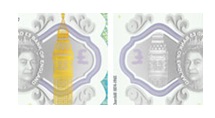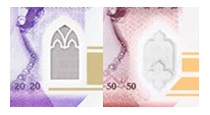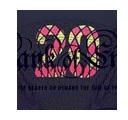19 Oct 2023
A number of changes have been announced to the Banknote Checking scheme. Below are a number of ways to check the new notes to identify potentially fraudulent activity.
Hologram image change
Tilt the note from side to side. Check the words change between the value of the note, ‘Five’, ‘Ten’ ‘Twenty’ or ‘Fifty’ and ‘Pounds’.
This is the first check that we recommend you always use to check your banknotes.

See-through windows
Look at the metallic image over the window. Check that the foil is gold on the front of the £5 and £10, gold and blue on the front of the £20, and gold and green on the front of the £50. The foil is silver on the back of all notes.

Look for a second, smaller window in the bottom corner of the £20 and £50 notes.

Other commonly used security features
Additional foil check
On the back of the notes, directly behind the silver crown on the front, there is a metallic foil patch. The £5 features a circular, green foil patch contains the word ‘BLENHEIM’. On the £10 note there is a book-shaped, copper foil patch with the letters ‘JA’. The £20 depicts a round, purple patch with the letter ‘T’. And the £50 contains a metallic, red foil patch containing the letter ‘AT’.

Ultraviolet number
Under a good-quality ultraviolet light, the value appears in bright red and green on the front of the notes, against a duller background. Counterfeit banknotes can sometimes show a simulation, so we do not advise relying on this as the only check that you do.

Posted 1 January 1970 at 12:00am